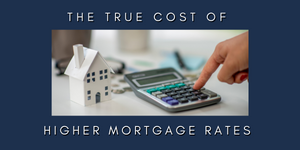You’ve probably heard that higher interest rates hurt the stock market.
It’s true. When the cost of capital increases, many businesses feel the heat.
But what about the average Joe? They feel the pressure too, especially when it comes to new home ownership. Today we’ll cover a topic discussed at many dinner tables right now: the true cost of higher mortgage rates.




